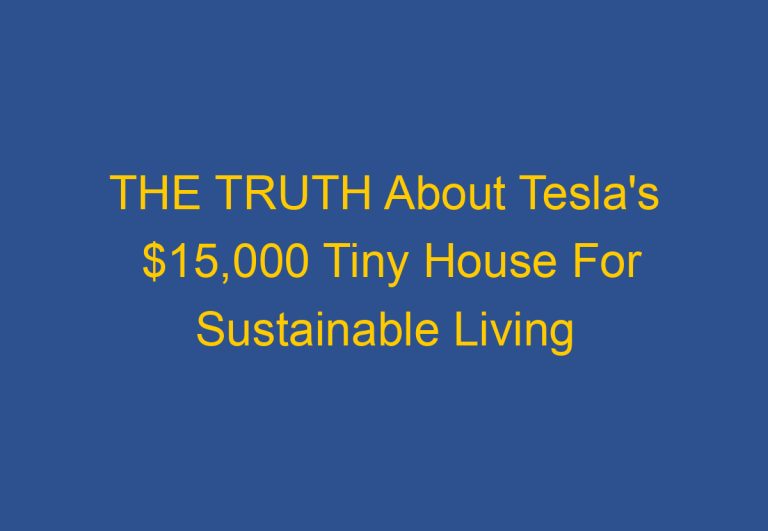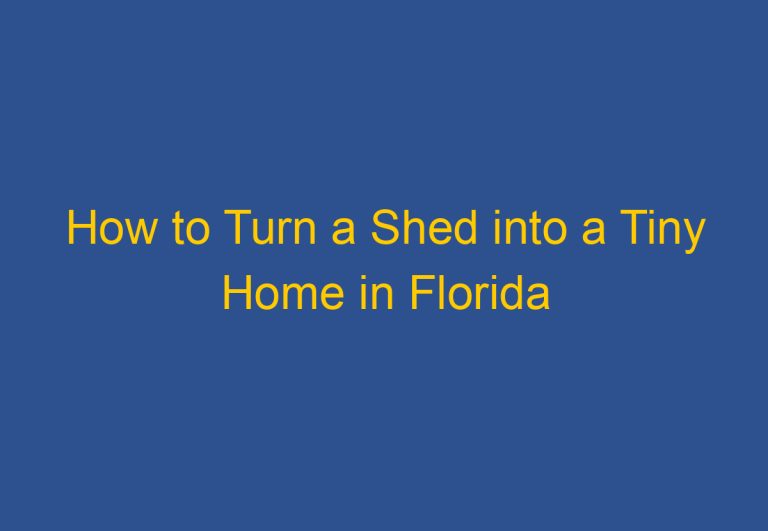Best Sheds To Convert To Homes: A Comprehensive Guide
In recent years, the trend of converting sheds into tiny homes has gained significant popularity. This innovative approach to housing offers an affordable and flexible solution for those looking to downsize or create additional living space. In this comprehensive guide, we’ll explore the best sheds to convert to homes, the conversion process, and important considerations to keep in mind.
Why Convert a Shed into a Home?
Converting a shed into a living space has several advantages:
- Cost-effective: Shed homes are often more affordable than traditional housing options.
- Flexibility: Sheds can be customized to suit your specific needs and preferences.
- Quick setup: The conversion process is typically faster than building a home from scratch.
- Minimal environmental impact: Repurposing an existing structure is more eco-friendly than new construction.
Choosing the Right Shed for Conversion
When selecting a shed to convert into a home, consider the following factors:
Size and Layout
The size of your shed will determine the available living space. Popular sizes for shed homes include:
- 12×24 feet
- 14×40 feet
- 16×40 feet
- 16×60 feet
Larger sheds provide more room for amenities and separate living areas. For example, a 16×60 shed can accommodate a 2-bedroom, 2-bathroom layout, offering ample space for comfortable living.
Construction Quality
Look for sheds with sturdy construction and high-quality materials. Key features to consider include:
- Pressure-treated lumber for the frame
- Weather-resistant siding
- Durable roofing materials
- Proper insulation
- Double-pane windows
Windows and Natural Light
Adequate natural light is crucial for creating a comfortable living space. Choose a shed with multiple windows or consider adding windows during the conversion process. Some shed designs feature transom windows for additional light and ventilation.
Customization Options
Many shed manufacturers offer customizable options, allowing you to tailor the structure to your specific needs. Look for sheds that allow for:
- Additional windows and doors
- Loft spaces
- Electrical and plumbing rough-ins
- Custom interior layouts
Top Shed Types for Home Conversion
- Barn-style sheds: These sheds offer a classic look and often feature high ceilings, making them ideal for loft spaces.
- Workshop sheds: Workshop-style sheds are excellent candidates for conversion, as they typically have ample space and sturdy construction.
- Cabin-style sheds: These sheds already resemble small homes and often come with features like porches and dormers.
- Garden sheds: While smaller, garden sheds can be converted into cozy studio apartments or guest houses.
- Utility sheds: Large utility sheds provide a blank canvas for customization and often have high ceilings for added spaciousness.
The Conversion Process
Converting a shed into a home involves several key steps:
- Planning and permits: Check local zoning laws and obtain necessary permits before beginning the conversion.
- Insulation: Properly insulate the walls, floor, and ceiling to ensure energy efficiency and comfort.
- Electrical and plumbing: Install wiring and plumbing systems to meet local building codes.
- Interior finishing: Add drywall, flooring, and other interior finishes to create a livable space.
- Kitchen and bathroom installation: Install necessary appliances and fixtures for daily living.
- Heating and cooling: Add a suitable HVAC system to maintain a comfortable temperature year-round.
Essential Considerations
Before embarking on a shed-to-home conversion project, keep these important factors in mind:
Legal Requirements
Check local regulations regarding accessory dwelling units (ADUs) and tiny homes. Some areas have specific requirements for minimum square footage, utility connections, and occupancy limits.
Budget
While shed conversions are generally more affordable than traditional home construction, costs can vary widely. Factor in expenses such as:
- The initial shed purchase
- Building materials
- Labor costs (if hiring professionals)
- Permits and inspections
- Utility connections
Site Preparation
Ensure that your property can accommodate a shed home. Consider factors such as:
- Foundation requirements
- Accessibility
- Utility connections
- Drainage and grading
Energy Efficiency
Prioritize energy-efficient design to reduce long-term costs and environmental impact. Consider features such as:
- High-quality insulation
- Energy-efficient windows and doors
- Solar panels or other alternative energy sources
- LED lighting
- Energy-efficient appliances
DIY vs. Professional Conversion
While some homeowners choose to tackle shed conversions as DIY projects, others opt for professional assistance. Consider your skills, available time, and budget when deciding between these options.
DIY Conversion
Pros:
- Cost savings on labor
- Complete control over the project
- Sense of personal accomplishment
Cons:
- Time-consuming
- Requires extensive knowledge and skills
- Potential for mistakes
Professional Conversion
Pros:
- Expertise and experience
- Faster completion time
- Adherence to building codes and regulations
Cons:
- Higher overall cost
- Less hands-on involvement in the project
Recommended Products for Shed-to-Home Conversions
To help you get started with your shed-to-home conversion, consider these essential products:
- Rockwool Insulation – Excellent for thermal and sound insulation.
- Panasonic WhisperCeiling DC Fan – Energy-efficient ventilation for bathrooms and kitchens.
- Rheem Electric Tankless Water Heater – Compact and efficient hot water solution.
- Mr. Cool DIY Mini Split Air Conditioner – Easy-to-install heating and cooling system.
- Nature’s Head Composting Toilet – Ideal for off-grid or limited plumbing situations.
Conclusion
Converting a shed into a home offers a unique and cost-effective housing solution for those seeking to downsize or create additional living space. By carefully selecting the right shed, following proper conversion procedures, and considering important factors such as legal requirements and energy efficiency, you can create a comfortable and functional living space that meets your needs.
Whether you choose to tackle the project yourself or enlist professional help, a shed-to-home conversion can provide an affordable and customizable housing option. With proper planning and execution, your converted shed can become a cozy and efficient tiny home that reflects your personal style and meets your living requirements.






